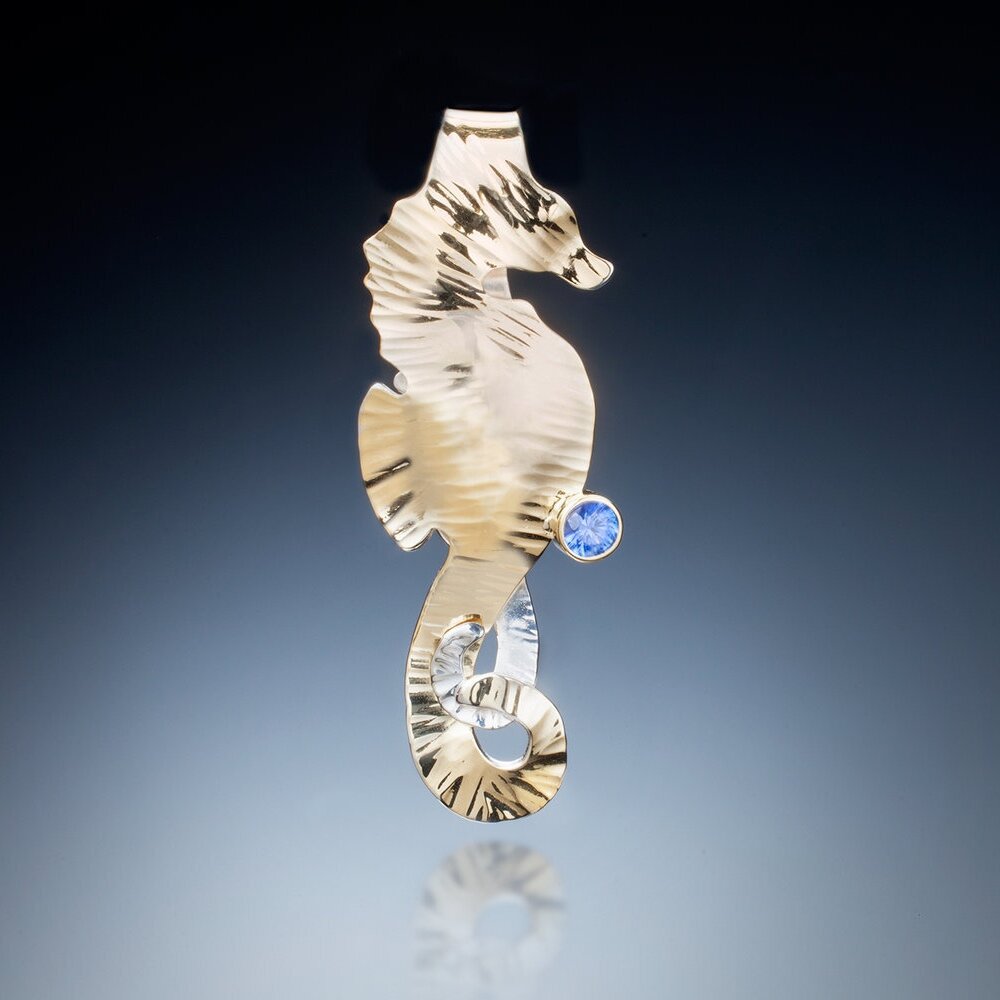There are few birthstones quite as distinct as July’s unmistakable red gem. Rubies are not only stunning, but they carry significant symbolic importance and have made notable appearances throughout history. Here are a few interesting facts about rubies, which only add to their existing allure. If you or a loved one have the honor of being born in July, you should not miss the opportunity to display a ruby as part of your collection.
Rubies Have Made Their Fair Share of Famous Appearances
Even the smallest rubies make their presence known. Mini rubies here accent Keith Field’s Lily Pad pendant and earring set.
In 2011, the largest ruby in history (weighing four pounds) that had been sculpted to look like the Liberty Bell was stolen by thieves and never recovered. The most expensive ruby in history is the “Sunrise Ruby” which is named after a poem by Rumi. It sold for more than 30 million dollars which is a world record for any gemstone at an auction. A well known ruby studded tiara was worn by Queen Elizabeth on special occasions, such as her 91st birthday. And of course, Dorothy’s signature shoes in The Wizard of Oz were adorned by hundreds of tiny rubies. Though the many pairs used in the filming each sold for hundreds of thousands, the “rubies” were actually replicated by beads and sequins.
Rubies Are the Same Mineral Base as Sapphires
The same mineral base - corundum - accounts for the indistinguishable brightness and durability between sapphires and rubies. The only separation can be made by their color.
In their purest form, both rubies and sapphires are the same mineral, corundum, which is actually clear. Whether it becomes brilliant blue or dazzling red depends entirely on the trace elements that exist in the corundum. Chromium is what causes the red of the ruby - and the more chromium there is, the more intense the red color becomes. There are several variants within the ruby coloring system, and many names to classify them, including “royal ruby,” “pigeon’s blood ruby,” and “fuschia ruby.”
Rubies Can Grow Inside Other Rocks
These red beauties can be found actually growing out of, or within, other stones such as marble or basalt. Technically, this process is termed “being hosted” by geologists, as the stone provides the ideal conditions and acts as a host for the gem to grow. The majority of the ruby deposits in the world exist in a band of marble that is nearly 2,000 miles long and runs through many countries.
A Symbol of Life and Vitality
Not surprisingly, ruby’s signature red color is held in comparison to the rich color of blood, and has long been celebrated to hold “the power of life.” Warriors in ancient times were known to not only adorn themselves in rubies to make them invincible, but actually insert them into their skin to help protect them during battle. Rubies are fabled to take away disease and anger, and bestow wisdom and success in love.

